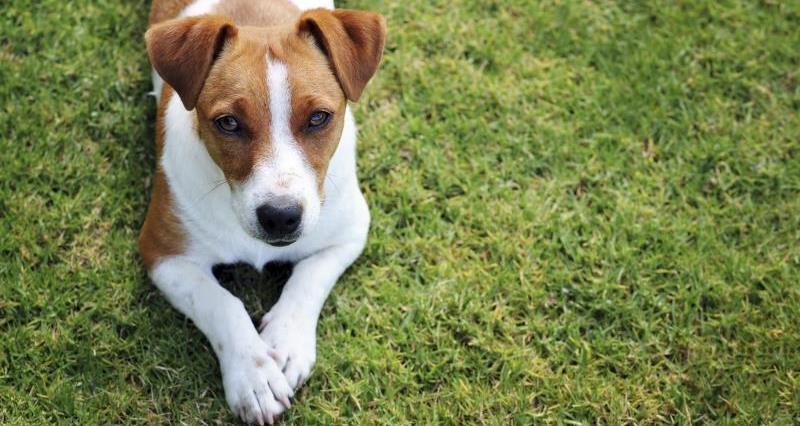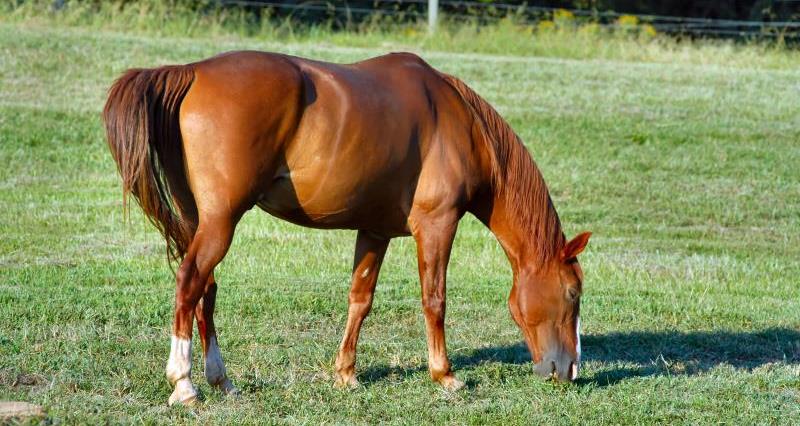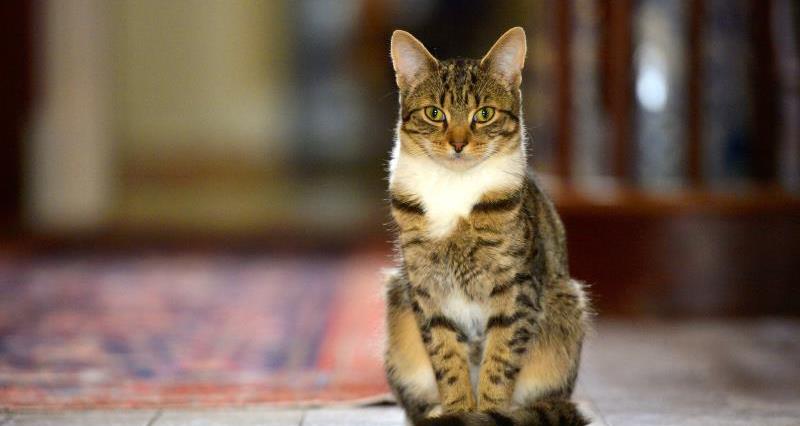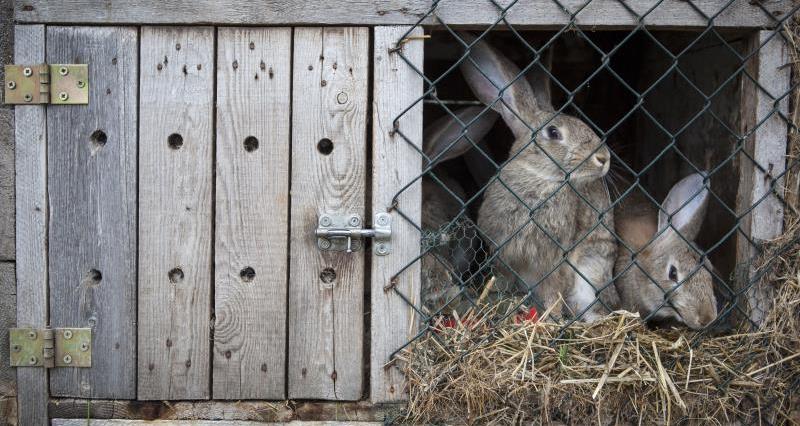Imagine wearing a thick winter coat on a hot summer's day and you'll understand why it's important to alter our routines when it comes to looking after our pets, whether they're dogs, cats, small animals or horses.
Being outdoors in direct sunlight can spell danger in a number of ways. Take a look at our guide for looking after your pets in hot weather.
JUMP TO: DOGS | HORSES | CATS | SMALL ANIMALS
Dogs
This advice from the Blue Cross will help to keep your dog safe and having fun in the summer sun.

Top tips
- Make sure your dog has access to clean water at all times, ideally a large bowl filled to the brim. Carry water and a bowl with you on walks.
- On hot days, walk your dog during the cooler parts of the day, in the early morning and late evening
- Watch your pet for signs of over-heating, including heavy panting and loss of energy. If you recognise these signs when on a walk, stop, find a shady spot and give your dog water.
- Never leave your dog (or any pet) alone in a car, even with the windows open
- Make cooling tasty treats by making ice cubes with your dog’s favourite food inside or stuff a Kong and pop it in the freezer
- Be particularly careful with short nosed dogs such as bull breeds, boxers, pugs, older dogs, and those that are overweight. These dogs can get heatstroke simply by running around.
Heatstroke
- Dogs can't sweat - unlike humans, dogs can’t sweat through their skin and so they rely on panting and releasing heat through their paw pads and nose to regulate their body temperature and keep cool.
- Know the signs - heatstroke in dogs include collapse, excessive panting, and dribbling.
- Take action - if you think your dog might be suffering from heatstroke, move them to a cool place, preferably with a draught, wet their coat with cool - not freezing - water, and contact your vet immediately.
Never leave a dog in a car, not even for a moment
- Dogs can suffer fatal heatstroke within minutes - a car can become an oven very quickly even when it doesn’t feel that warm. When it is 22°c outside - within an hour - the temperature in a car can reach an unbearable 47°c.
- Take action - if you see a dog in distress inside a car, dial 999 immediately and ask for the police. A dog in distress in a hot car is an emergency and the police will advise you what to do based on the situation.
Exercise
- Time your walks carefully - walk your dog during the cooler hours of the day, either first thing in the morning or early evening.
- Dogs’ paw pads can burn on hot pavement - as a general rule, if it’s too hot for your hand it’s too hot for their paws.
- Consider swimming - as an alternative to walking in the summer heat. Remember that not all dogs like to swim, so if yours doesn’t then don’t force them and never throw a dog into water. Also be wary of tides and currents.
Sunburn
- Pale-coloured dogs are vulnerable to sunburn - particularly on their ears, noses and sparsely haired areas.
- Prevention is best - keep your dog indoors when the sun is strongest, between 11.00am and 3.00pm.
- Paws for thought - take care of your dog’s delicate paws. If the pavement is too hot for your hand, it’s too hot for their paw pads too.
You can find out more by visiting the Blue Cross website.
Horses
Summer is a great time to ride, but summer heat can be dangerous for horses, resulting in dehydration, lethargy, and general malaise. Severe heat stress can even cause diarrhea and colic. This advice from the British Horse Society will help you to keep your horse cool and safe.

Water
- Keep your horse hydrated - the single most important thing is to keep your horse hydrated.
- Horses can easily consume more than double their normal water intake in hot weather.
- A constant supply of clean and fresh water is essential – water that has been left to stand for too long will become warm and possibly unpalatable.
- Make sure that more than one water source is available in fields for groups of horses.
- Replace electrolytes - if your horse has been sweating a lot, it might be a good idea to add electrolytes to his feed or water to replace those lost in the sweat.
- Travelling? - take more water with you than you think you will need.
Shelter
- Shelter is essential in hot weather - it isn’t just for protecting the horse from wind and rain. All horses need to be able to get out of the direct sun and into some shade.
- Consider stabling during the day - it might be sensible to keep horses stabled through the hottest parts of the day providing their stable remains cool. Inadequately ventilated stables can become uncomfortably hot and stuffy.
- Field shade - if your horse is turned out, a walk-in field shelter provides the best protection from the sun. The shade provided by trees and hedges may provide a good substitute, but remember that the shade will move with the sun so there may be certain times of the day when it isn’t accessible to your horse.
Exercise
- Time it right - if you are going to ride, do it in the morning or evening when it is coolest and don’t push the horse too hard. They can’t be expected to do as much in hot weather as at other times. Overweight horses will suffer more than those in the correct condition – yet another good reason not to let your horse get fat.
- Always wear hi-viz - even in bright sunshine, patches of shade can make it difficult for drivers to spot horses on the road.
- Cool down properly - hose the horse down all over with cool water. There are large blood vessels close to the surface in the horse’s neck and inner thigh. Concentrating on these will cool the horse more quickly as the water will be able to cool a greater volume of blood. Don’t neglect the rest of him, though – it still needs cooling! Many horses will appreciate this as a treat even if they haven’t been ridden.
Flies
- Minimise exposure to flies - if you can, keep your horse in during the day and out at night.
- Cover up - thin fly sheets and good insect repellents can help greatly, and remember to take particular care with horses with open wounds or sarcoids.
- Indoor protection - spraying repellent on the walls of stables and shelters may also be a good idea.
- Remove droppings - poo-pick frequently from the paddock and stable to avoid attracting flies.
Sun protection
- White markings are prone to burns - non-pigmented areas on horses (white markings for example) can burn easily, so sunblock may be needed. Keep a particular eye on grey horses, especially their muzzles and the tips of their ears.
Heatstroke
- Know the signs - these include increased pulse and breathing rate, an irregular heartbeat, dehydration and a raised temperature. The horse may be sweating profusely or may not be sweating at all.
- Take action - if you are concerned that your horse has heatstroke, move him somewhere cool and seek immediate advice from your vet.
You can find out more by visiting the British Horse Society.
Cats
These tips from the Blue Cross will help to keep your cat cool and safe throughout the summer months.

Top tips
- Pale-coloured cats are vulnerable to sunburn; particularly on their ears, noses and sparsely haired areas.
- Sun damage can lead to skin cancer which may require extensive surgery – even amputation in severe cases.
- The best prevention is to keep your cat indoors when the sun is strongest, between 11.00am and 3.00pm.
- Alternatively, cover vulnerable areas or regularly apply a non-toxic waterproof human sunblock or a product specifically for pets.
- Seek prompt veterinary advice if your cat’s skin looks sore, crusty or scaly.
- Your cat needs access to clean water at all times, ideally in a large bowl filled to the brim. Older cats are particularly vulnerable to dehydration.
- Grooming is important, especially for longhaired animals. A tangle-free coat will protect your pet’s delicate skin and keep them cool. Some animals may need their coats trimming – seek advice from a professional groomer.
Heatstroke
- Prevention is key - make sure your cat has access to clean water at all times, ideally a large bowl filled to the brim. On hot days, let you cat outside during the cooler parts of the day, in the early morning and late evening
- Know the signs - signs of heatstroke include collapse, excessive panting, and dribbling.
- Take action - if you suspect your cat is suffering, move them to a cool place, preferably with a draught, wet their coat and contact a vet immediately. Avoid overcooling by using cool, not freezing, water.
Open windows
- Potential danger - curious cats seek out cooling breezes in the summer, and many suffer serious injuries after falling from heights when their owners open the windows.
- Keep them safe - either install tip and tilt windows, which allow air into the room without offering access outside to curious cats, or use wire mesh, netting or a screen across windows when they are open to prevent the cats getting out.
- Get them checked - if your cat does fall from more than one storey, the animal should be checked by the vet. Even if your cat appears to be fine, there is a risk of internal injuries. Get a check after any fall if your cat seems to be behaving strangely.
Getting shut in
- Check sheds - the risk of cats getting shut in sheds, greenhouses and garages increases in the summer as cats spend more time out and about. If your cat goes missing it is worth thinking about what has been happening in the neighbourhood recently and making enquiries.
You can find out more by visiting the Blue Cross website.
Small animals
This information from The Guardian will help you to protect small animals such as rabbits and guinea pigs in hot weather.

Top tips
- Don't get lax with hygiene: hot weather results in more flies and maggots and can lead to flystrike, an often fatal condition that affects rabbits.
- Do groom your pet and brush out loose hair. Consider having long-haired rabbits and guinea pigs trimmed for the summer.
- Do keep hutches and runs in the shade all day. Move them as the sun moves round if necessary.
- Don't keep the hutch on the ground: improve ventilation by putting it on bricks or similar.
- Do keep water topped up, and be extra-vigilant about evaporation.
- Do give small animals pieces of water-rich fruit and vegetables, such as celery and apple, to keep them hydrated.
- Do provide a ceramic tile or a frozen bottle of water for your pet to sit or lean on.
- Do use a misting spray to cool off larger pets, such as rabbits. This can be used on dogs, too - remember to avoid the face.